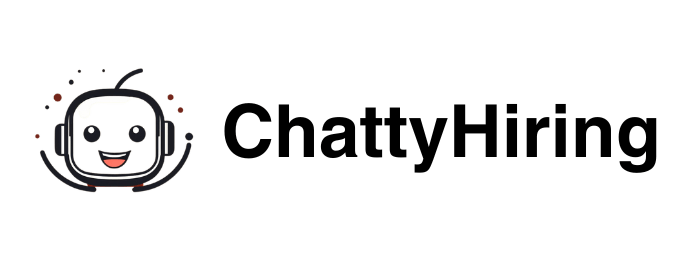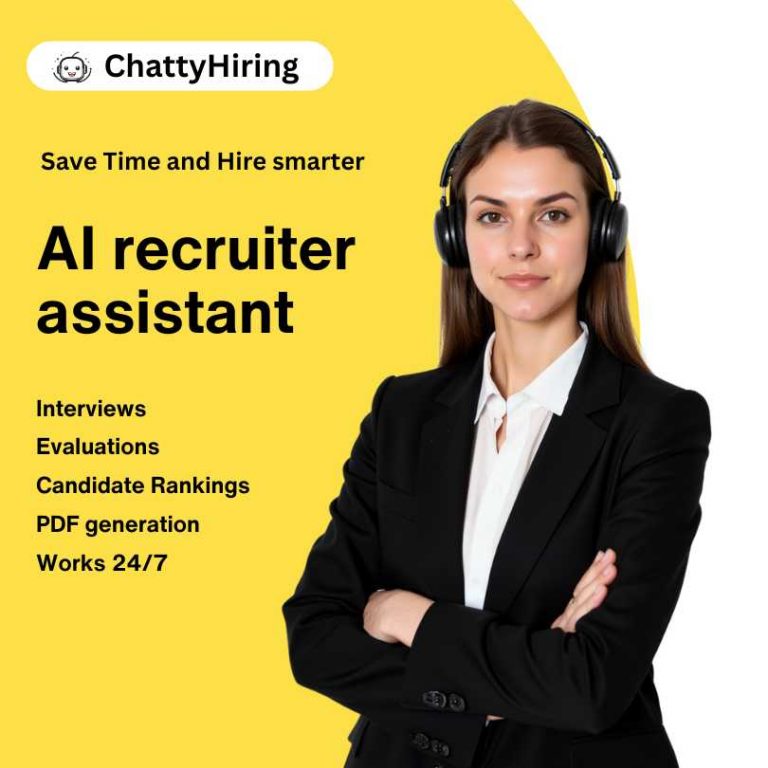The recruitment landscape is rapidly evolving, with organizations seeking innovative solutions to enhance hiring efficiency and streamline processes. In today’s competitive job market, the use of AI-driven recruitment software for improving time-to-hire metrics has become a pivotal strategy for many businesses. As technology continues to shape the future of talent acquisition, the impact of AI tools on recruitment outcomes is undeniable. Join us on a journey to explore how AI-driven recruitment software is revolutionizing the hiring process and driving success in the modern era of workforce management.
Understanding AI-Driven Recruitment Software
In today’s fast-paced hiring landscape, organizations are turning to AI-driven recruitment software for improving time-to-hire metrics. This advanced technology offers a range of benefits, revolutionizing traditional recruitment processes. Let’s delve deeper into how AI is reshaping the talent acquisition industry.
Benefits of AI-driven recruitment software
Enhanced Efficiency: AI tools can automate repetitive tasks like resume screening, freeing up valuable time for HR teams to focus on strategic tasks.
Improved Candidate Matching: AI algorithms analyze candidate data to identify the best fit for the job, leading to higher quality hires.
Faster Decision-making: By providing data-driven insights, AI software accelerates the decision-making process, reducing time-to-fill vacancies.
Role of AI in improving time-to-hire metrics
AI recruitment software plays a pivotal role in enhancing time-to-hire metrics by streamlining recruitment workflows and optimizing candidate selection procedures. From identifying top talent to scheduling interviews efficiently, AI tools significantly reduce the time it takes to bring new employees onboard.
Incorporating AI technology in recruitment not only speeds up the hiring process but also ensures a more accurate assessment of candidate capabilities. By leveraging AI-driven recruitment software, organizations can stay competitive in today’s dynamic job market and secure top talent effectively.
Key Features of AI Recruitment Software
As organizations strive to optimize their recruitment processes, AI-driven recruitment software emerges as a game-changer in improving time-to-hire metrics. By leveraging innovative features, AI tools provide unparalleled capabilities that revolutionize talent acquisition strategies. Let’s explore some key features of AI recruitment software that propel hiring efficiency to new heights.
Automated resume screening
AI algorithms scan and analyze resumes swiftly, quickly identifying qualified candidates based on predefined criteria.
Automated resume screening eliminates manual review tasks, enabling recruiters to focus on engaging with top candidates and nurturing talent pipelines efficiently.
Candidate matching algorithms
Advanced AI tools use machine learning algorithms to match candidate profiles with job requirements, ensuring precise candidate-job fit.
Candidate matching algorithms significantly reduce the time spent on manual candidate evaluation, expediting the selection process.
Skill assessments and analysis
AI-driven recruitment software offers skill assessments that objectively evaluate candidates’ skills and competencies, providing data-driven insights for decision-making.
Skill analysis tools help recruiters identify candidates with the right skills for the role, enhancing the quality of hires and overall team performance.
By incorporating these key features into their recruitment processes, organizations can streamline hiring procedures, reduce time-to-hire metrics, and secure top talent effectively. AI recruitment software not only enhances efficiency but also elevates the candidate experience, reinforcing employer brands as innovative and forward-thinking entities in the competitive job market.
Implementing AI Solutions in Talent Acquisition
In the quest to enhance recruitment efficiency and speed up the hiring process, organizations are increasingly turning to AI-driven recruitment software. However, successful implementation of AI tools in talent acquisition requires strategic planning and seamless integration into existing processes. Let’s delve into the key steps involved in implementing AI solutions in talent acquisition to improve time-to-hire metrics effectively.
Integrating AI technology into existing recruitment processes
Conduct a thorough analysis of current recruitment workflows to identify pain points and areas for improvement.
Collaborate with IT and HR teams to select AI tools that align with organizational goals and are compatible with existing systems.
Provide training and hands-on workshops to familiarize HR professionals with using AI-driven recruitment software effectively.
Training HR teams on using AI tools effectively
Offer comprehensive training programs that cover the functionalities of AI recruitment software and best practices for maximizing its potential.
Encourage HR professionals to leverage AI tools for tasks like candidate screening, interview scheduling, and predictive analytics to streamline the hiring process.
Establish clear guidelines and protocols for integrating AI solutions seamlessly into daily recruitment operations.
By proactively integrating AI technology and providing adequate training to HR teams, organizations can harness the power of AI-driven recruitment software to optimize time-to-hire metrics and secure top talent efficiently. Embracing AI solutions in talent acquisition is not just a trend but a strategic imperative to stay competitive in the evolving recruitment landscape.
Measuring Success with AI Recruitment Software
In the realm of talent acquisition, the ability to quantify improvements and measure the impact of AI-driven recruitment software on time-to-hire metrics is key to optimizing recruitment strategies. By establishing clear metrics and tracking performance indicators, organizations can evaluate the effectiveness of AI solutions in streamlining hiring processes. Let’s explore the essential elements of measuring success with AI recruitment software and enhancing time-to-hire metrics.
Tracking time-to-hire metrics before and after AI implementation
Compare the time taken to fill vacancies pre and post implementing AI-driven recruitment software to assess the efficiency gains.
Monitor the time spent on various recruitment stages, from initial screening to job offer acceptance, to identify bottlenecks and areas for improvement.
Analyze data trends and patterns to understand how AI tools impact the speed and accuracy of hiring decisions.
Analyzing cost savings and efficiency improvements
Calculate the cost savings achieved through reduced time-to-hire and improved hiring accuracy with AI recruitment software.
Assess the productivity gains and resource optimization resulting from automated tasks and streamlined workflows enabled by AI tools.
Measure the return on investment (ROI) of AI-driven recruitment software by quantifying the benefits in terms of reduced time and enhanced candidate quality.
By diligently tracking and analyzing key performance metrics associated with AI recruitment software, organizations can gain valuable insights into the impact of technology on their recruitment outcomes. This data-driven approach not only helps fine-tune recruitment strategies but also demonstrates the tangible benefits of leveraging AI solutions for enhancing time-to-hire metrics.

Overcoming Challenges in Adopting AI in Recruitment
Integrating AI-driven recruitment software into talent acquisition processes offers immense benefits, but it also comes with its set of challenges that organizations need to address proactively. Overcoming these challenges is crucial to harnessing the full potential of AI tools for improving time-to-hire metrics. Let’s navigate through the common hurdles faced in adopting AI in recruitment and strategies to mitigate them effectively.
Addressing bias in AI algorithms
Conduct regular audits and assessments of AI algorithms to detect and eliminate any biases that could impact candidate selection.
Incorporate diversity and inclusion criteria into AI models to ensure fair and unbiased decision-making.
Collaborate with data scientists and HR professionals to fine-tune AI algorithms for inclusivity and neutrality.
Ensuring data privacy and security in AI-driven recruitment
Implement robust data protection measures to safeguard sensitive candidate information handled by AI recruitment software.
Comply with data privacy regulations, such as GDPR or CCPA, to maintain transparency and accountability in data processing.
Conduct regular security audits and penetration testing to identify vulnerabilities and enhance data security practices.
Navigating the complexities of bias mitigation and data privacy while leveraging AI in recruitment requires a vigilant and proactive approach from organizations. By prioritizing fairness, transparency, and security in AI adoption, organizations can build trust with candidates, uphold ethical recruitment standards, and optimize time-to-hire metrics effectively.
FAQ
How does AI-driven recruitment software impact the candidate experience?
AI-driven recruitment software enhances the candidate experience by streamlining the application process, providing timely feedback, and matching candidates to suitable roles efficiently. This leads to a more positive and personalized recruitment journey for job seekers.
Can AI recruitment software completely replace human recruiters?
While AI recruitment software can automate repetitive tasks and speed up processes, human recruiters play a crucial role in building relationships with candidates, understanding company culture fit, and making final hiring decisions. AI complements human expertise rather than replacing it entirely.
What measures are in place to ensure data privacy when using AI in recruitment?
Leading AI recruitment software providers adhere to strict data privacy regulations, implement encryption methods to secure candidate information, conduct regular security audits, and provide transparency on data handling practices to maintain data privacy and security standards.
How can organizations overcome resistance from employees when adopting AI recruitment tools?
To overcome resistance, organizations should focus on clear communication about the benefits of AI tools, provide comprehensive training to employees on how to use the software effectively, involve employees in the decision-making process, and address any concerns or misconceptions through open dialogue.
What are the cost implications of implementing AI-driven recruitment software?
The cost implications of implementing AI-driven recruitment software vary depending on the provider, features required, and the size of the organization. However, organizations typically experience cost savings in the long run due to increased efficiency, reduced time-to-hire metrics, and improved quality of hires.
-

A passionate advocate for the future of HR innovation. With expertise in leveraging AI to revolutionize recruitment processes, Carlos has a clear vision: empower HR teams while creating meaningful candidate experiences.
View all posts





